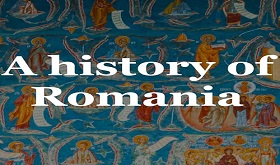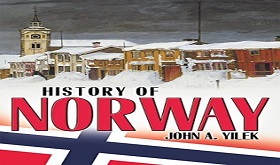Russia
Russia, the largest country in the world, occupies one-tenth of all the land on Earth.
GEOGRAPHY
Russia, the largest country on the planet, involves one-10th of all the land on Earth. It spans 11 time regions across two continents (Europe and Asia) and has coasts on three oceans (the Atlantic, Pacific, and Arctic).
The Russian landscape varies from desert to frozen coastline, tall mountains to giant marshes. A lot of Russia is made up of rolling, treeless plains called steppes. Siberia, which involves 3/4 of Russia, is dominated by sprawling pine forests called taigas.
Russia has about 100,000 streams, including probably the longest and generally powerful on the planet. It also has many lakes, including Europe’s two largest: Ladoga and Onega. Lake Baikal in Siberia contains more water than any other lake on Earth.
Individuals and CULTURE
There are about 120 ethnic gatherings in Russia who speak in excess of 100 languages. Around 80% of Russians trace their ancestry to the Slavs who got comfortable the country 1,500 years ago. Other major gatherings include Tatars, who came with the Mongol invaders, and Ukrainians.
Russia is known all over the world for its thinkers and artists, including writers like Leo Tolstoy and Fyodor Dostoevsky, authors like Pyotr Ilyich Tchaikovsky, and ballet dancers including Rudolf Nureyev.
NATURE
As large as Russia is, it’s no surprise that it is home to countless environments and species. Its forests, steppes, and tundras give habitat to many rare animals, including Asiatic black bears, snow leopards, polar bears, and small, rabbit-like mammals called pikas.
Russia’s most memorable national parks were set up in the nineteenth 100 years, but decades of unregulated contamination have taken a cost for many of the country’s wild places. At present, about one percent of Russia’s land area is safeguarded in jelly, known as zapovedniks.
Russia’s most famous animal species is the Siberian tiger, the largest cat on the planet. Indigenous to the forests of eastern Russia, these endangered giants can be 10 feet (3 meters) in length, not including their tail, and gauge as much as 600 pounds (300 kilograms).
GOVERNMENT and ECONOMY
Russia’s history as a democracy is short. The country’s most memorable political decision, in 1917, was immediately turned around by the Marxists, and it wasn’t until the 1991 appointment of Boris Yeltsin that democracy grabbed hold.
Russia is a federation of 86 republics, provinces, territories, and districts, all constrained by the public authority in Moscow. The head of state is a president chosen by individuals. The economy is based on a vast stock of natural resources, including oil, coal, iron mineral, gold, and aluminum.
HISTORY
The earliest human settlements in Russia arrived around A.D. 500, as Scandinavians (what is currently Norway, Denmark, and Sweden) moved south to areas around the upper Volga Waterway. These pilgrims blended in with Slavs from the west and fabricated a fortress that would eventually turn into the Ukrainian city of Kiev.
Kiev advanced into a realm that administered the vast majority of European Russia for 200 years, then separated into Ukraine, Belarus, and Muscovy. Muscovy’s capital, Moscow, remained a small trading post until the thirteenth 100 years, when Mongol invaders from central Asia drove individuals to get comfortable Moscow.
In the 1550s, Muscovite ruler Ivan IV became Russia’s most memorable tsar, or sovereign, after driving the Mongols out of Kiev and unifying the area. In 1682, 10-year-old Peter the Great and his more seasoned brother, Ivan, both became tsar (however Peter’s aunt and Ivan’s mother, Sophia, was in charge). Before long, Sophia was ousted, and Peter was viewed as by most to be the real tsar, however he allowed his brother to keep his official position. For 42 years, Peter attempted to make Russia more present day and more European.
In 1762, Peter went on an outing to Germany, and his better half, Catherine, named herself the sole leader of Russia. Only a half year later the tsar kicked the bucket — perhaps on his significant other’s requests. Presently known as Catherine the Great, the sovereign continued to modernize Russia; upheld arts and culture; and expanded its territory, claiming Ukraine, Crimea, Poland, and other places. She managed for 34 years.
In 1917, Russians unhappy with their leadership ousted Tsar Nicholas II and formed a chosen government. Only a few months later, however, a communist gathering called the Marxists held onto power. Their leader, Vladimir Lenin, created the Association of Soviet Socialist Republics (U.S.S.R., or the Soviet Association) uniting Russia and 11 other nations.
The Soviet Association battled on the United States in The Second Great War, but relations between the two powers and their allies became strained not long after the war finished in 1945. The United States and many of its allies were stressed over the spread of communism, the kind of government the Soviet Association was. (In a communist society, all property is public and individuals share the wealth that they create.)
These worries prompted the Virus War, an extensive stretch of pressures between the Soviet Association and the United States. That finished in 1991 when the Soviet Association separated after many of its republics — like Ukraine, Lithuania, and Estonia — concluded they would have rather not been parted of the communist country anymore.
INDEPENDENT REPUBLICS
After the Soviet Association dissolved in 1991 under the moderate Soviet leader Mikhail Gorbachev, the former republics became 15 independent states, or nations. The largest and generally powerful of these is Russia. Others include Ukraine, Lithuania, and Belarus.
During this time, Boris Yeltsin became president, and Russia went through many changes. Instead of the public authority being constrained by the Communist party, individuals were chosen for serve in a representative democracy with many political parties. Private businesses were presently allowed to work instead of the public authority controlling most everything. Citizens had also had new political and cultural opportunities to articulate their thoughts without fear of breaking the law.
Yeltsin was reappointed in 1996, but his bad health kept him from completing his term. He surrendered a few years later and named his state leader, Vladimir Putin, to replace him as acting president.
In 2000, Putin was formally chosen by the citizens of Russia. In the main years of his administration, Putin continued many of Yeltsin’s reforms and upheld the United States in the war on dread after the attacks on September 11, 2001. But he disposed of a portion of the cultural opportunities and assumed command over national television organizations. This allowed his administration to influence news reports.
Putin was chosen for a second term in 2004. But as in the United States, he was unable to serve multiple sequential four-year terms. So in 1998 he appointed an aide, Dmitri Medvedev, to take his place as top state leader. Many accept that Putin actually governed Russia from behind the scenes during this time.
In 2012, Putin ran again for president and won. But he wasn’t as popular among individuals, and citizens challenged unfair races. His administration arrested many political adversaries and called the dissidents traitors to Russia who wanted to be more similar to the West, especially the United States.
In 2014, Russian soldiers invaded the Crimean Peninsula, an area of land in southern Ukraine lined by the Black Sea. Putin said that individuals of Crimea had decided in favor of independence from Ukraine.
Many Ukrainians and leaders from several other nations could have done without Putin’s actions and thought the “vote” wasn’t real. But in March of that year, Putin marked a treaty with some Crimean leaders that said that Crimea was part of Russia. Ukrainian officials announced that they wouldn’t perceive the agreement and still considered Crimea part of Ukraine, not Russia.
Russian forces remained in Crimea to hold Ukraine back from taking it back. Later in 2014, battles along the eastern line broke out among Ukrainians and Russian-backed rebels who wanted all of Ukraine to turn out to be part of Russia.
In 2019, comedian and actor Volodymyr Zelensky was chosen leader of Ukraine. Zelensky ran on a platform of uniting the country and ending line battles in the east with Russia. To assist with that, the United States planned to give Ukraine a great many dollars in military aid to assist with fighting the Russian occupations.
In July 2019, U.S. president Donald Trump was accused of withholding those assets except if Zelensky investigated Trump’s political rival, Joe Biden. He declined, and Trump was eventually impeached, or formally accused of misconduct in office, by the U.S. Place of Representatives over these claims. (Ukraine got the aid later in the year.)
RUSSIA INVADES
In February 2022, Putin announced an invasion on the country and sent troops to take over major cities, including the capital, Kyiv. Ukrainian citizens have been fighting back against the attacks, and Zelensky has promised to remain in the country and battle until Ukraine regains its opportunity.
Many world leaders unequivocally denounced Putin’s actions, and some punished Russia by stopping trade with the country or putting travel bans in place. The expectation is that these punishments — called sanctions — will hurt Putin and Russia enough to stop the fighting before the war spreads into other European nations.


